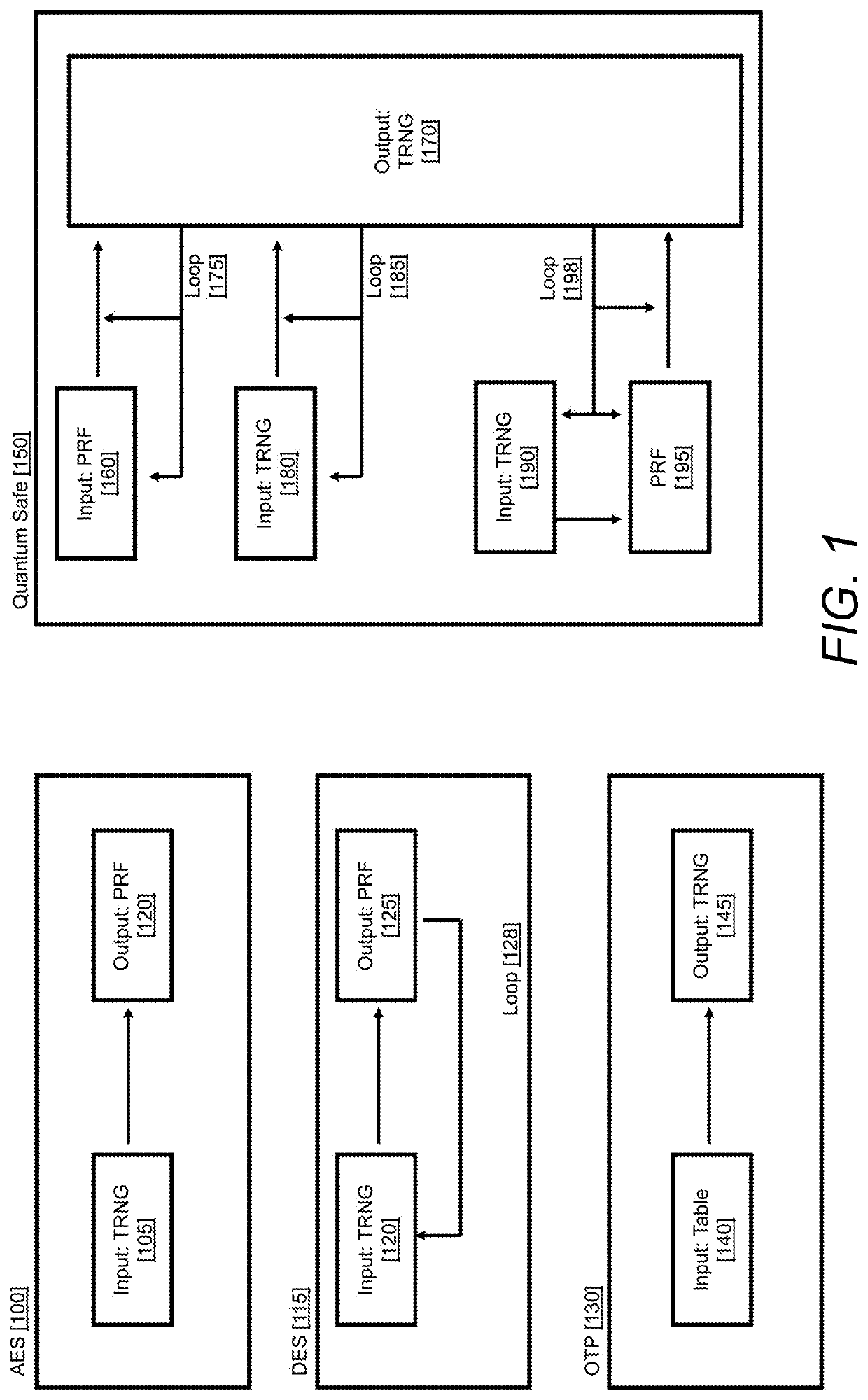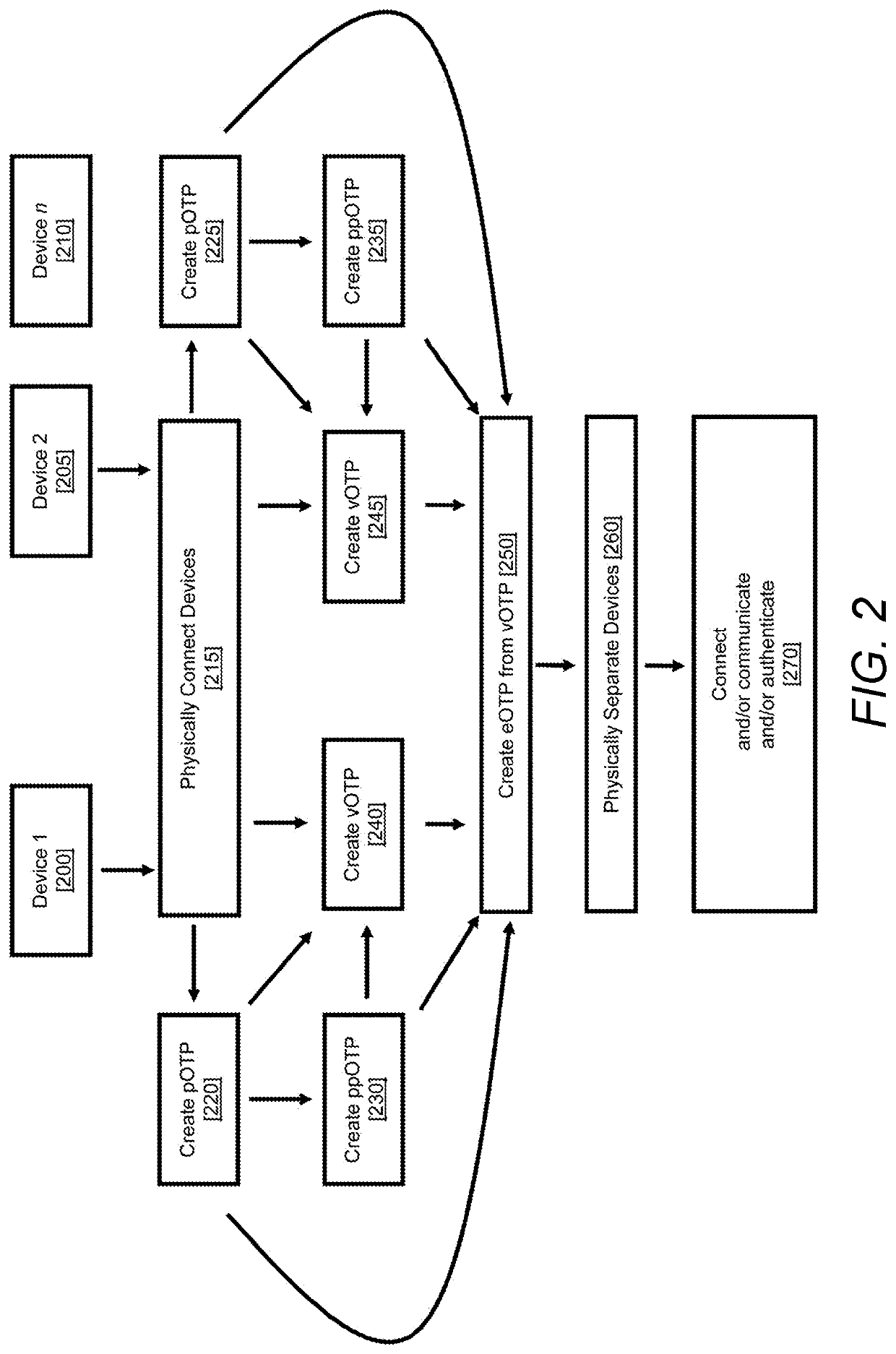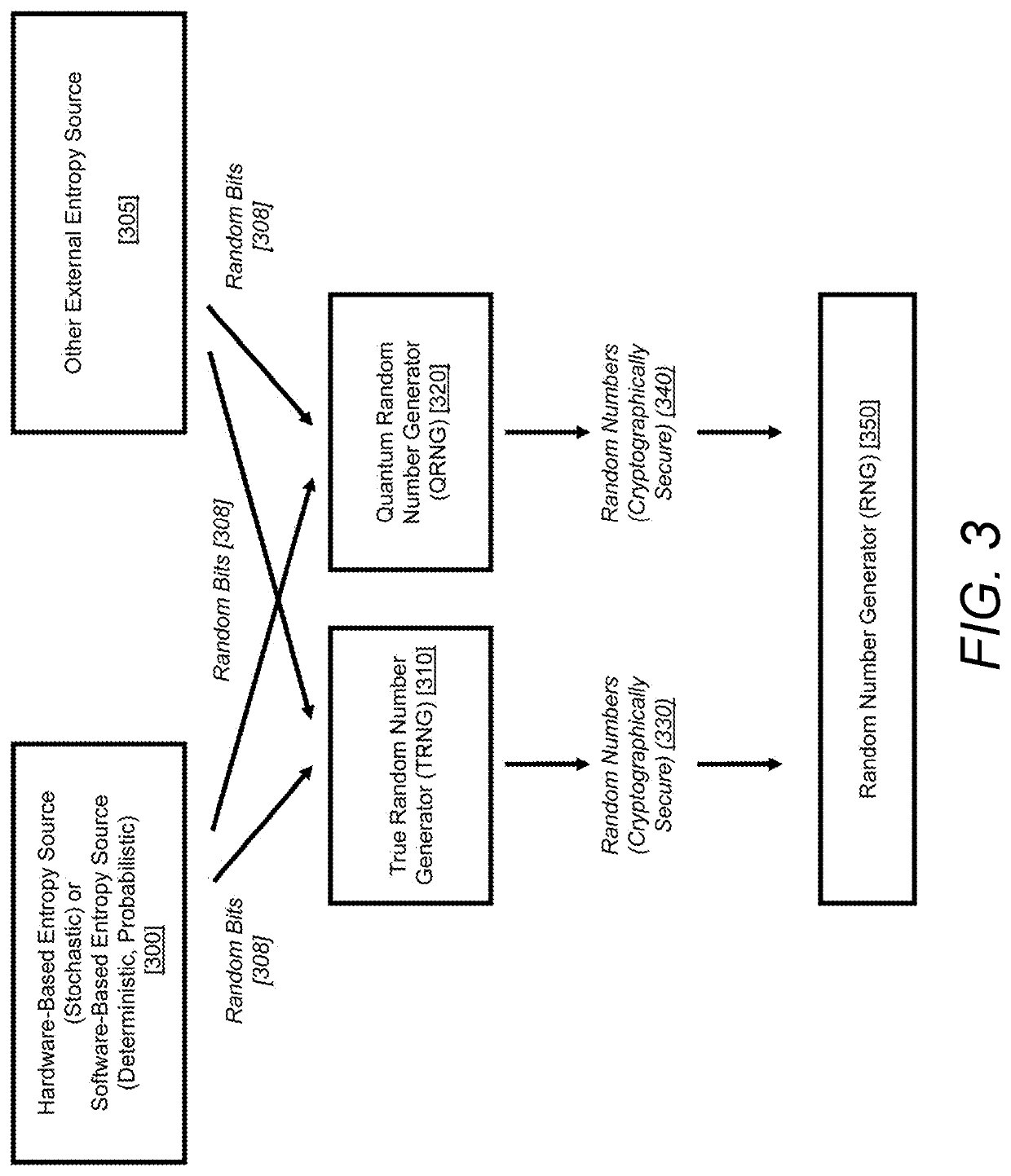Passages of written text in books are typically poor sources of random information exhibiting low entropy because they contain repeating predictable patterns and limited combinations of characters.
However physical processes can be subject to bias, for example a loaded dice will
skew the random information favoring particular numbers, or in the case of
radio frequency static, the
noise may occasionally become predictable (for example, when a
radar signal is beamed in a particular direction or perhaps a nearby cellular phone starts operating).
Encryption using pure QRNGs and
quantum effects with well-constructed exchanges of references to private keys only is completely stochastic in nature, exhibiting the maximum entropy and reveals no discernible patterns rendering
cryptanalysis impossible.
No amount of computational power applied to either the exchange of private keys or the
encryption of
plaintext / input information can decrypt the
cipher text.
QRE uses Resistant One-Way Functions (ROWF) or Pseudo-Random Functions (PRF) so may never be completely safe.
No amount of computational power with a SOWF is sufficient to create a reverse function; for example, Heisenberg's Uncertainty Principle shows it is impossible to compute random physical properties derived from
quantum effects.
For example, any attempt to create a reverse function for a
photon's quantum properties through observation only destroys any SOWF result, making
recovery of the original value impossible.
By comparison, Resistant One-Way Functions (ROWF) are a computationally simple, mathematical function often requiring two or more parameters / values, whose reverse function produces one correct solution and an impractically large number of incorrect solutions to check and / or an impractically difficult, polynomial time computation.
So in this case ROWF's require impractically large computational power to check all permutations of possible two key values to discover a valid result revealing an
encryption key.
The
Advanced Encryption Standard (AES) uses a ROWF function, previously thought to be highly resistant, which just simply multiplies two large prime numbers, whereas the AES reverse ROWF requires factoring the product of the two large primes; and considered impractical.
AES is vulnerable to factoring with quantum computers using Shor's
algorithm.
Other ROWF's have been proposed yet the practicality of their use and future resistance remains uncertain.
ROWF functions being deterministic may never be completely safe.
The PRF function is computationally simple, with a specific index and easily provides a short random number sequence, whereas the PRF's reverse ROWF function to find a short random number sequence in an extremely long sequence is an impractically difficult polynomial time computation.
Searching within the very long predictable sequence for the discovered portion of random number is lengthy and difficult, however if found, provides an index and a possible encryption key.
In the future, quantum computers and quantum search algorithms may be capable of rapidly checking entire portions of cyclical / predictable random number sequences, rendering the exchange of private encryption keys with ROWFs ineffective.
ROWFs are used in technologies like quantum resistant block chains and lattice algorithms which are thought to be invulnerable to
attack by quantum computers but in actuality may also not be completely secure.
If the PRF's, are rendered insecure by advances in quantum search algorithms then initial QKD private key exchanges may become irrelevant when they are no longer effective at protecting the
cipher text from decryption.
Consequently, QKD using Resistant One-Way Functions (ROWF) for
plaintext encryption can never be considered completely safe.
Shared secrets and certificates produce public keys from a predictable one-way function, such as factoring very large prime numbers, where it is computationally easy to multiply two or more primes but very difficult to find the prime factors from one very large number.
The security of these public keys to prevent the private keys being revealed is dependent upon mathematical and computational complexity and hence the practicality and timeliness of computing a reverse of the one-way function.
Quantum photon polarization is inherently stochastic so cannot be predicted, however the reliability and frequency of key exchanges based on polarization degrades as a function of distance of
fiber optic cables used, the furthest achieved being just over 400 km with practical private exchanges typically being around 30 to 100 km.
While the first group in the past using OTPs has often been more secure, the amount of information which could be encrypted was limited by the size of the OTP's single
key exchange and the
key exchange must be in private and in close proximity.
Reuse of the same OTP introduces the possibility of
cryptanalysis and drastically reduces the strength of any encryption.
Both the current standard AES like Enigma, with its large number of rotor permutations, positions and sequences are susceptible to advances in modern computers, as are the resistant one-way functions used for the
key exchange vulnerable to step progress in
mathematical theory.
However, the underlying deterministic nature of the encryption techniques used by AES still remains essentially the same, leaving
brute force decryption for now beyond the reach of existing conventional computer's speed and storage.
Since these one-way functions are essential to the frequent exchange of private keys, quantum computers threaten to render the present encryption standards ineffective allowing the interception of private information on public networks.
However, since frequent private key exchanges still rely upon deterministic mathematical functions, the application of quantum computers and the step change nature of advances in
mathematical theory require any future resistant one-way mathematical function to be selected with great caution and even so may still become susceptible to advances in quantum algorithms and mathematical theory.
Current methods of encryption are either impractical or not quantum-safe particularly with very large quantities of sensitive information crossing the public internet.
No amount of computational power applied to either the exchange of private keys or the encryption of
plaintext / input information can decrypt the QSE
cipher text being exchanged between sender and
receiver, or stored on the same device.
Consequently, both AES and QKD encryption methods remain in theory susceptible to
cryptanalysis as they are or may become vulnerable to the novel use of quantum computers and algorithms.
Like AES and QKD's, deterministic OTPs are vulnerable to cryptanalysis (decipherment techniques).
Stochastic OTP's however are not vulnerable to cryptanalysis, although the OTP's
random sequence cannot be reused without becoming deterministic and so the
random sequence is used at the same rate as the plaintext so the OTPs become impractical by being exhausted when used with very large volumes of information routinely transferred around
the internet.
The inventor of U.S. Pat. No. 9,590,951B2 noted that OTPs can be used for a form of post-quantum encryption, however there are several problems with this approach.
First, this approach does not use truly random numbers or produces truly random results, making it vulnerable to cryptanalysis.
Second, OTPs could be reused in this approach making them potentially breakable.
Third, the lifetime of the OTP is limited, meaning that data cannot be secured for prolonged time periods.
Fourth, the size of communication is limited by the storage capacity available for the corresponding OTP.
However, this approach also does not use truly random numbers (timestamps) or produce truly random results (since a deterministic
convolution function is used to expand the timestamps).
The lack of randomness in the key and generated OTP is a significant issue as is the encryption which relies on a ROWF, leaving the Quatemion Julia Set OTP vulnerable to cryptanalysis.
 Login to View More
Login to View More  Login to View More
Login to View More 


